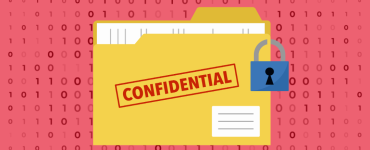Digitalisation is fundamentally modernising our industry and everyday working life. This is also perceptible in the traditional industry. Whereas in the past machines with high acquisition costs ensured long-term production and stable turnover, today industrial companies have to react more flexibly to changes in the globalised market and sales fluctuations. Alexander Steiner explains in an interview how digital solutions can help to master this challenge. He works as Head of Operations, Partnership & Marketing at Findustrial GmbH. In his opinion, Equipment-as-a-Service offers more flexibility.
Alexander, the traditional industry is facing great challenges. How do you intend to change and improve the current status quo as a start-up for financing solutions?
Alexander: In the traditional industry, a company sells its machinery and receives the full proceeds directly and immediately. The customers have made long-term investments and received highly specialised machines in return, which could also become defective through daily and intensive use. Of course, that always involves a certain risk. Another case is fluctuating turnover: In a dynamic business field, sales can rise or fall in the short term. This is where the traditional industry often lacks flexibility. To minimise this risk, there are business models such as Equipment-as-a-Service.
What are Equipment-as-a-Service business models and why do we need them?
Alexander: These business models are quite different because customers do not have to pay the full cost of a machine immediately. The product itself is billed on a usage basis, through outcome-based billing. Thereby, the costs are settled monthly per unit of use, for example by payment per hour or payment per piece. This means that customers pay in a more targeted way and according to their actual use and production. We also call this “pay-per-use”.
What are the advantages of these business models?
Alexander: This method of settlement enables customers to avoid the risk of machine breakdowns or sales fluctuations. Pay-per-use business models offer variable leasing options and guarantee more flexibility in production. This also makes it easier to finance and align costs and rates with turnover. As Findustrial GmbH, we support other businesses in this respect and create liquidity for future investments. Many companies are better able to respond to a fluctuating market or economic crises with this model.
This gives customers many advantages. What advantages do manufacturers have when they switch to the usage-based model?
Alexander: Equipment-as-a-Service not only pays off for customers, but also for the manufacturers of machines. In turn, manufacturers can differentiate and stand out from other competitors. Equipment-as-a-Service models allow them to reduce the burden on their sales force by generating long-term, recurring revenue. At the same time, manufacturers also have stronger customer loyalty, because there is much more contact with customers through service contracts, for example, which are perfect for entering into an “as-a-service” model.
What are the practical use cases, for example?
Alexander: Pay-per-use models make sense in various scenarios. When machines are purchased for new orders and both utilisation and sales are not yet guaranteed in the long term, Equipment-as-a-Service offers the necessary flexibility. In this way, customers can generally curb their costs and adjust them to their sales.
What potential do you see for Equipment-as-a-Service business models in the future?
Alexander: Equipment-as-a-Service will not replace traditional sales. However, the model can be a useful complement to this. In the next few years, we expect the share of sales among manufacturers for this type of business model to be between ten to twenty per cent or even higher.
Thank you very much for the interview!
Findustrial GmbH develops “pay-per-use” financing solutions for usage-based business models and provides a digital platform for customers. The company was founded in Austria in 2020.




